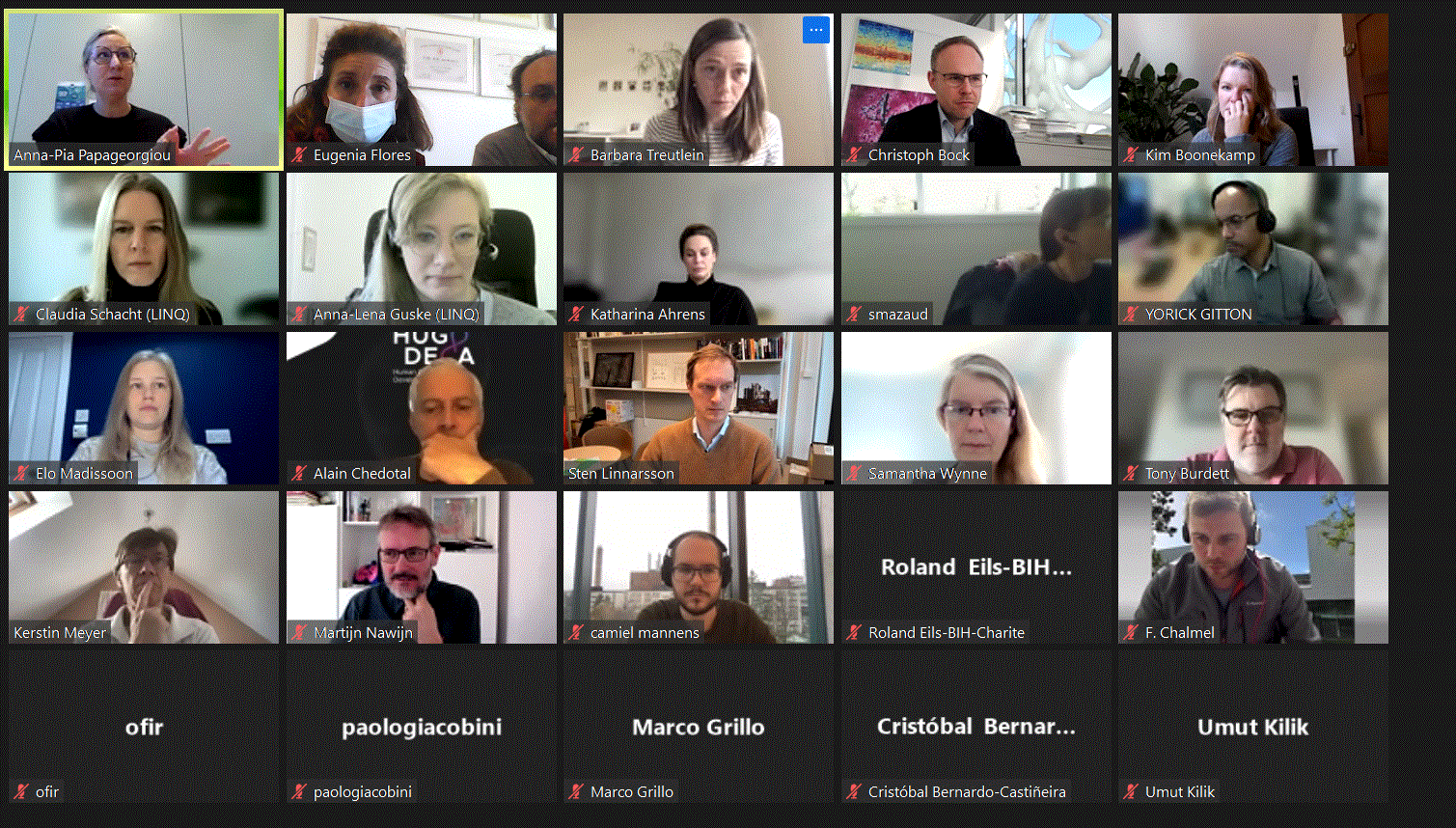November 9, 2021

HUTER H2020-HCA cluster meeting
Date: November 9th 2021
Last Tuesday HUTER consortia participated in the cluster meeting organized by the European Commission where the different consortia as part of the Human Cell Atlas initiative (HCA) joined. Recent achievements were highlighted and future actions commented on.
The HCA was launched in October 2016 and is the first international coordinated initiative to undertake a comprehensive mapping of the uterus cells, by initiating the mapping of a set of organs.
The cooperation of HUTER with the HCA and the rest of Atlas projects is of high importance as will help to establish the maps boundaries or limit the resolution, in order to ensure scientific and research usefulness of the Organ Maps.
To this respect, HUTER project is one of the pilot actions building the foundation of the Human Cell Atlas. HUTER contributes to enhance the European role in the HCA, by delivering the first cell atlas of the human uterus, exhibiting to the international community how European researchers contribute to set excellent foundations for the global human cell atlas.
HUTER aims to generate the first single-cell and spatial maps of the female uterus across the whole lifespan, and create an open access cloud-based platform to host the cellular atlas, thus positioning the uterus as flagship project for demonstration of the exploitation potential of the Cellular Maps fully aligned with and increasing the contents and relevance of the HCA initiative.
About the Human Uterus Cells Atlas – HUTER
The human uterus is a flagship reproductive organ with profound implications not only in reproduction but also in women ́s health. HUTER can advance the Human Cell Atlas initiative for the exploitation potential in Obstetrics and Gynecology and biomedicine research areas such as Regenerative Medicine or Reproductive Medicine.
The uterus is itself a model for regenerative medicine since (i) endometrial tissue regenerates monthly and its transformation is executed through dynamic changes in states and interactions of multiple cell types, and (ii) myometrial tissue has remarkable regenerative capacity and extensive remodelling throughout pregnancy. Hence, the primary motivation HUTER proposal stems from the need to better understand the human uterus in order to more effectively address uterine diseases that impact women ́s health such as myomas or endometriosis and/or might contribute to infertility, infant and maternal mortality and morbidity.
HUTER technological and biological platform will be a crucial resource for the scientific and clinical communities to define the cellular basis of health and disease, allowing the rapid development of new diagnosis and prognosis tools and therapeutic advancements in the field.
Link to the project website here

